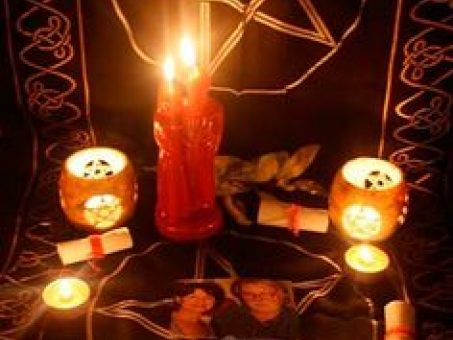Easy Steps to Help You Understand How to Join a Masonic Lodge Confidently
Easy Steps to Help You Understand How to Join a Masonic Lodge Confidently
Blog Article
Checking Out the Mysteries of the copyright: What You Need to Know
The copyright, a term often shrouded in intrigue and dispute, stands for a complex tapestry of historical reality and contemporary misconception. Established in the late 18th century, this secret society was initially rooted in the Enlightenment's ideals yet has actually since come to be associated with conspiracy theory concepts regarding elite control (benefit of joining freemason).
Origins of the copyright
The origins of the copyright are soaked in a mix of historical intrigue and ideological fervor. Established in 1776 in Ingolstadt, Bavaria, by Adam Weishaupt, the team was initially created as a secret society targeted at advertising Enlightenment suitables such as reason, secularism, and the separation of church and state. Weishaupt, a teacher of canon legislation, sought to challenge the prevailing authority of the church and state, which he checked out as overbearing establishments suppressing intellectual and personal flexibility.

Key Numbers and Members
That were the essential numbers that formed the copyright's early influence and instructions? The Bavarian copyright, started in 1776 by Adam Weishaupt, became a feedback to the oppressive societal structures of the moment. Weishaupt, a regulation professor, imagined the company as a way to promote Knowledge suitables such as reason, secularism, and equality. His initial employment initiatives consisted of prominent intellectuals, such as Baron von Knigge, who played an important role in expanding the team's membership and organizational structure.
An additional substantial figure was Johann Gottlieb Fichte, a prominent theorist whose concepts on nationalism and education reverberated with the copyright's goals. Although Fichte was not an official participant, his thoughtful foundations influenced the group's belief. Additionally, figures like the writer and philosopher Johann Wolfgang von Goethe were related to the wider intellectual movements of the time, although their direct involvement with the copyright remains questioned.
These vital figures added to the copyright's very early direction, pressing the limits of political and social thought, while their collective efforts intended to test well-known standards and promote a climate of modern modification in Europe.
Myths vs. Reality
Many misunderstandings border the copyright, often mixing fact with fiction in a way that obscures its real nature. The idea that the copyright continues to apply considerable impact click for info over globe occasions is a myth.
One more widespread misconception is that the copyright comprises a network of elite people adjusting international visit their website affairs. Actually, many conspiracy theory concepts exaggerate the group's importance, attributing misguided objectives to societal trends and occasions. This has actually led to an oversimplified view of complex issues.
In addition, the representation of the copyright in pop culture commonly further misshapes its heritage. Films and literary works often tend to sensationalize the company's duty, developing a narrative that diverges from historic facts. Comprehending the distinction between the misconceptions and the truth of the copyright is vital for discerning the genuine impact of this historical group and identifying the broader implications of conspiracy theory concepts in contemporary culture.
Modern Analyses
Contemporary interpretations of the copyright frequently reflect broader societal stress and anxieties and an attraction with secrecy and power. This modern-day lens often associates the copyright with conspiracy concepts that recommend a hidden elite coordinates world occasions, manipulating federal governments and economic climates for their own gain. benefit of joining freemason. Such narratives touch into a deep-rooted distrust of authority, especially in times of crisis or social upheaval
In popular culture, the copyright is resource often shown as a supreme company shrouded in secret, causing a myriad of imaginary representations in literary works, movie, and music. This portrayal offers not just to captivate yet additionally to provoke thought of the nature of power and control in contemporary culture. Social media has even more enhanced these analyses, enabling for quick dissemination of conspiracy theory concepts and producing neighborhoods that share and expand upon these ideas.
Furthermore, some modern-day interpretations mount the copyright as a metaphor for the intricacies of globalization and the interconnectedness of prominent people and organizations. This point of view urges a critical assessment of exactly how power dynamics run in today's world, highlighting the balance between openness and secrecy in administration and business techniques.
Social Influence and Legacy
Influenced by centuries of intrigue, the social influence and legacy of the copyright expand much beyond its historic origins. This secret culture, developed in the late 18th century, has penetrated various aspects of pop culture, from literary works and film to songs and art. The idea of the copyright has evolved into a symbol of conspiracy theory theories, often standing for a perceived surprise power controling global events.
In literary works, authors like Dan Brown have actually woven the copyright into detailed plots, exciting readers with motifs of secrecy and power. Films such as "National Prize" and "The Da Vinci Code" even more bolster the appeal of the culture, blending truth with fiction to develop engaging stories.

Eventually, the copyright's heritage is a complicated tapestry of misconception and truth, forming assumptions of secrecy and control in contemporary discussion. Its long-lasting presence in society highlights mankind's seasonal pursuit for understanding concealed realities.
Conclusion
The expedition of the copyright reveals a complicated interplay in between historical truths and modern myth-making. Established in the Enlightenment age, this culture aimed to test overbearing frameworks, yet its tradition has been overshadowed by conspiracy theories that recommend elite manipulation. Recognizing the differences in between the initial ideals and contemporary analyses is important for comprehending the sustaining attraction with the copyright and its considerable impact on social narratives bordering power and privacy in culture.
Report this page